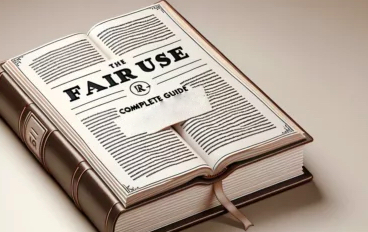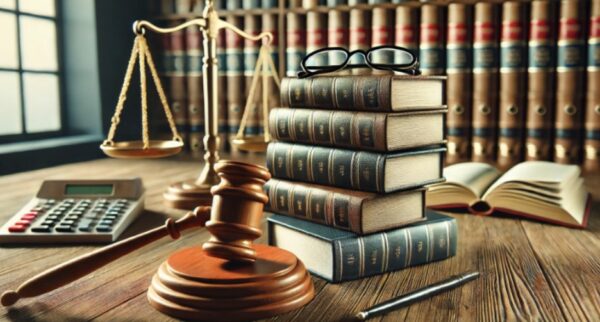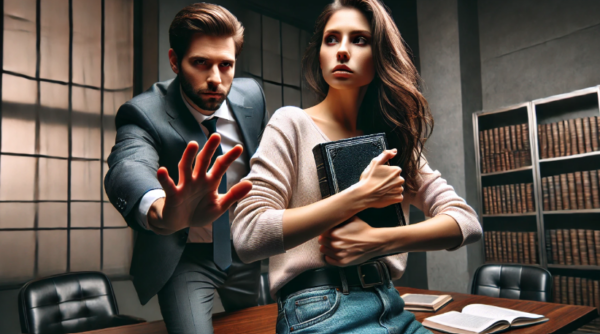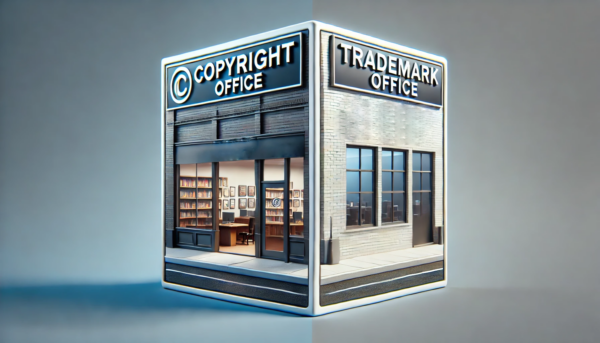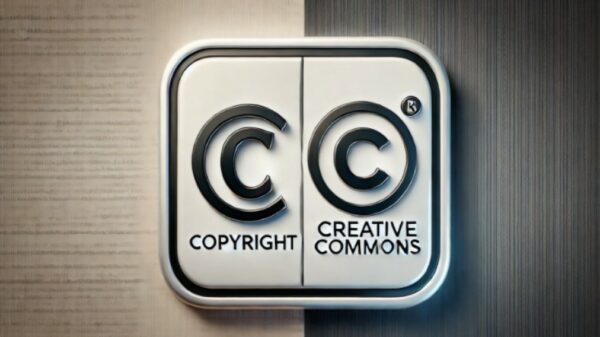Imagine this: You’ve written the perfect book. Your narrative is strong, your characters are engaging, and to give it just the right flair, you’ve included a few quotes, song lyrics, or images. But then, a troubling question pops up—”Can I actually use this material?”
Navigating copyright permissions can feel like stepping through a maze. You want to respect others’ work, but at the same time, you need to understand when using someone else’s material is legal and when you need permission. This guide will clarify all the factors and rules around fair use and permissions so you can confidently make fair use claims for the content you need without a legal headache later.
Using Copyrighted Material: What You Need to Know
Copyright law gives creators exclusive rights to their works—whether books, images, songs, or films—allowing them control over reproduction and distribution. This means that if you’re planning to use someone else’s work, you need to understand when permission is required and when fair use may apply.
Your Publishing Journey Awaits – Start NowIn most cases, using copyrighted material without permission poses legal risks, but copyright law has exceptions. Fair use is one such exception, allowing limited use of copyrighted material, especially for purposes like criticism, teaching, and news reporting. However, if your book is for profit, fair use may be less applicable, as courts closely scrutinize commercial uses. The next section dives into fair use in detail to help you determine if it applies to your project.
Fair Use: What It Is and When It Applies
Fair use provides some flexibility by allowing limited use of copyrighted material without permission under certain conditions. Courts determine whether a use qualifies as fair by weighing four factors:
- Purpose and Character of the Use
Nonprofit and educational uses favor fair use, while commercial uses face more scrutiny. Transformative use—adding new meaning or context—also strengthens a fair use claim. For instance, analyzing or critiquing a work leans in favor of fair use, whereas simply reproducing it does not. - Nature of the Copyrighted Work
Factual or informational content is generally more open to fair use than highly creative works like novels or music, which are more closely protected under copyright law. - Amount and Substantiality of the Portion Used
Using a small, non-central part of the work leans toward fair use. Quoting a few lines from a novel, for example, is more likely to be fair use than copying a full chapter. However, if you use even a small but essential part—such as the “heart” of the work—it might weigh against fair use. - Effect Upon the Potential Market or Value
If using the copyrighted material could replace the original or reduce its value, it’s less likely to be fair use. Courts consider whether your use harms the copyright owner’s potential earnings or impacts existing or future markets.
By considering these and other factors together, you can gauge whether fair use might cover your needs. For commercial projects, it’s generally safer to evaluate all elements carefully and seek permission if unsure.
The Commercial Nature of the Work: Why It Matters
The commercial intent of your work significantly impacts whether you can use copyrighted material without permission. Courts are cautious with commercial uses, especially if the material’s unauthorized use might affect the creator’s ability to earn from their work.
Commercial vs. Nonprofit Educational Purposes
Nonprofit uses, like classroom instruction or academic research itself, lean in favor of fair use since they inform or educate without profit. Commercial uses, on the other hand, undergo stricter examination. If your book is for sale, it will likely face more scrutiny under fair use.
Market Impact on Fair Use
Under fair use, the court defense will also assess whether your use impacts the original work’s market. If readers might buy your book instead of the original, this would count against fair use. Even in commercial contexts, however, transformative uses that add value can improve your chances of fair use.
If your book has a commercial goal, it’s best to weigh the impact on the original work’s current market very carefully. When in doubt, consider seeking permission, especially if you’re using substantial portions of copyrighted material.
Understanding Copyright Law and the Rights of Owners
Copyright law grants creators exclusive rights to control how their work is reproduced, distributed, or displayed. Copyright protection detailed in the U.S. Copyright Act allows creators to profit from their work and encourages further creativity.
What Is Copyright Infringement?
Infringement occurs when copyrighted material is used without permission in a way that violates the owner’s rights. This includes copying, adapting, or publicly displaying the entire work anywhere. Even using a key part of the work without permission can qualify as infringement.
When to Seek Permission
If your intended use doesn’t clearly qualify as fair use, it’s safest to get permission by contacting the copyright owner. They may grant it (sometimes with conditions or a fee) or deny the request. Understanding when permission is needed helps you avoid legal risks and respect others’ work.
Obtaining Permissions: Step-by-Step Guide
When fair use doesn’t apply, obtaining permission to use copyrighted material is the safest approach. Here’s a quick guide:
Step 1 – Identify the Copyright Owner
First, determine who holds the rights to the material. For books and articles, this is usually the author or publisher, while songs may involve both the songwriter and a music publisher. Credits, copyright notices, and online databases like the Copyright Office’s catalog are helpful resources for identifying the copyright holder. If you’re unsure, consider contacting a licensing agency for assistance.
Step 2 – Make a Permissions Request
Once you’ve identified the owner, prepare a respectful and clear request specifying what you want to use, the amount, and your purpose. For example, if you plan to use a chapter from a novel, specify which chapter, how it will be included, and its context in your book. This transparency shows professionalism and also helps the owner make an informed decision.
Step 3 – Negotiate Terms
The copyright holder may respond with conditions such as a licensing fee or credit requirements. Take this opportunity to clarify terms and ensure they’re feasible for your project. Some holders may allow specific uses for free or at a reduced rate depending on the scope and context.
Step 4 – Consider Protecting Your Work with a Copyright Certificate
When your manuscript is complete, consider securing your own work with a copyright certificate. Spines offers a free copyright certificate upon manuscript upload, allowing you to safeguard your rights as the creator from the start and ensure protection for your original content.
Step 5 – Handle Denials or High Fees
If your request is denied or fees are too high, explore alternatives like public domain or royalty-free content. You might also re-evaluate fair use as a backup, but only after assessing all four factors to ensure compliance.
Step 6 – Document the Agreement
Once permission is granted, obtain a written agreement as proof of authorization. This document is essential for protecting yourself legally, so keep copies of all related communication for your records.
If permission is denied or fees remain unmanageable, creating original content or rephrasing ideas can provide effective, legal alternatives.
Your Publishing Journey Awaits – Start NowHow to Use Copyrighted Material Without Infringement: Practical Tips
If permission isn’t granted, here are ways to legally incorporate copyrighted material:
- Use Only a Small Portion
Use only what’s necessary for your purpose. For example, quoting a line or two from a song, rather than a full verse, reduces the risk of infringement. Even small amounts, however, should avoid the “heart” of the work. - Alter the Purpose or Context
Make your use transformative by adding new meaning or context, like critiquing or parodying a scene from a movie. This approach leans toward fair use since it contributes something original. - Consider Public Domain and Royalty-Free Alternatives
Public domain works (those with expired copyrights) are free to use. Royalty-free sources like Unsplash for images or Project Gutenberg for books provide quality alternatives without permission requirements. - Create Original Content
Summarize or describe a work’s impact rather than quoting directly. This reduces infringement risk while maintaining reference to the original work. - Use Fair Use Thoughtfully
When fair use applies, use copyrighted material minimally and add analysis, commentary, or critique. Fair use favors additions that create something new or unique.
These strategies help you legally incorporate copyrighted material while still encouraging creative expression and creativity in your work.
Educational, Nonprofit, and Academic Uses: When Fair Use Might Apply
Educational, nonprofit, and academic uses have a better chance of qualifying as fair use, especially if they don’t aim to generate profit. However, the four fair use factors should still guide your approach to determining fair use.
Nonprofit and Academic Contexts
Nonprofit educational uses, like classroom teaching or research, are often fair use since they contribute to public knowledge. Teachers using short excerpts from a novel or researchers quoting studies for critique generally qualify, provided their use is minimal and doesn’t do substantial harm or impact the original market.
Limits on Educational Use
Even in educational contexts, using substantial or key portions of a work may not qualify as fair use under certain circumstances. When in doubt about classroom use, opting for specific educational formats, where available, can respect the copyright holder’s rights.
What to Do if You’re Unsure: Seek Professional Help
If you’re unsure whether your intended use qualifies as fair use, it’s wise to seek guidance. Copyright law can be complex, and missteps can lead to unintended infringement. Here are some resources to help you make an informed decision.
Consulting a Copyright Attorney
An attorney specializing in copyright can provide personalized advice on whether your particular use likely qualifies as fair or if you need permission. They can also help with drafting permission requests or negotiating terms, ensuring you’re legally protected.
Utilizing the Fair Use Index
The U.S. Copyright Office’s Fair Use Index is a helpful tool that compiles court cases related to fair use, offering examples across different contexts. Reviewing similar cases can give you a clearer sense of how courts might view your situation.
Checking with the Copyright Office
The Copyright Office website provides resources and guidelines for creators navigating fair use and permissions. It’s a good place to start if you need general guidance or background information on copyright law.
Seeking professional help or using reliable resources can help you make informed choices, minimize legal risks, and feel confident in your approach to copyright permissions.
Navigating Copyright with Confidence
Understanding copyright and when to seek permission or rely on fair use can be challenging, but it’s essential for using others’ creative work responsibly. By learning the basics of fair use, knowing when permission is required, and using tools like the Fair Use Index, you can protect your work and respect the rights of original creators.
If you’re ready to secure your manuscript, at Spines we offer a free copyright certificate when you upload your manuscript, giving you peace of mind and legal protection from day one. With this knowledge and the right tools, you’re set to confidently create a work that honors both legal requirements and your creative vision.
If you’d like to learn more, schedule a free 15-minute call with one of our experts.
FAQ: Using Copyrighted Material in Your Book
Q: When do I need permission to use copyrighted material in my book?
You typically need permission if your use of copyrighted material doesn’t qualify as fair use or fall under another legal exception. If you’re using copyrighted text, images, lyrics, or media in a way that could impact the original work’s market value—especially for a commercial project—it’s safest to seek permission.
Q: What is fair use, and how do I know if it applies?
Fair use allows limited use of copyrighted material without permission for specific purposes, such as criticism, commentary, education, and news reporting. Courts consider four factors when evaluating fair use: purpose, nature, amount used, and market impact. If your use is transformative and doesn’t harm the market for the original, it’s more likely to be fair use.
Q: How can I find the copyright owner to request permission?
For books and articles, the copyright holder is usually the author or publisher, while for songs, it might involve the songwriter and a music publisher. You can often find copyright information in the work’s credits or on copyright office databases. For complex cases, licensing organizations can assist in locating the right contacts.
Q: What should I include in a permission request?
In your request, include the specific material you want to use, how much you’ll use, and for what purpose. Detail where and how the material will appear in your book. This clarity helps the copyright owner understand your needs and make an informed decision on whether to grant permission.
Q: What happens if permission is denied or too costly?
If permission is denied or fees are prohibitive, consider alternatives like public domain, royalty-free content, or creating an original version inspired by the material. You might also reassess whether your intended use could fall under fair use after careful consideration of the four factors.
Q: What is a copyright certificate, and how can I protect my own work?
A copyright certificate is proof of ownership over your work. Here at Spines, our publishing platform offers a free copyright certificate when you upload your manuscript, which safeguards your rights and provides legal documentation that your work is protected from unauthorized use.
Q: What are the consequences of copyright infringement?
Copyright infringement can lead to legal consequences, including fines, removal of your book from publication, and potential lawsuits. Even using a small, central part of someone’s work without permission could be considered an infringement. To avoid these risks, ensure you understand copyright law or seek professional guidance when needed.
Your Publishing Journey Awaits – Start Now
